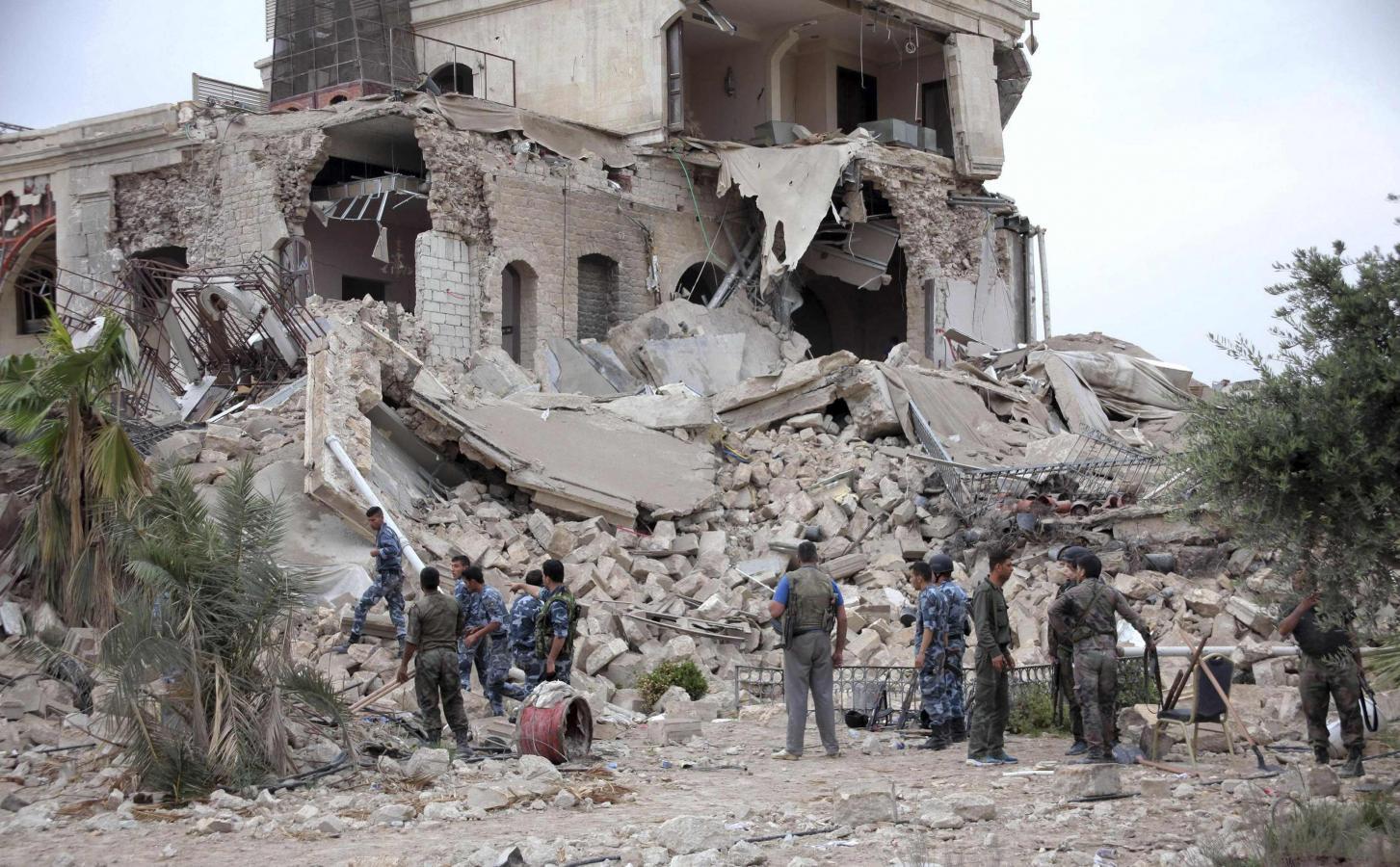
Homs Revolts have a rich history that spans centuries, marked by significant events and notable figures. Did you know that these uprisings were pivotal in shaping the region's political landscape? From ancient times to modern-day conflicts, Homs has been a focal point for resistance and change. Why is Homs so important? Its strategic location and diverse population have made it a hotspot for various movements. Curious about the key moments and players? This blog post will delve into 20 fascinating facts that highlight the resilience and determination of the people of Homs. Ready to learn more? Let's dive into the captivating history of Homs Revolts!
Key Takeaways:
- Homs, an ancient city in Syria, has a long history of standing up against foreign rule, from the Ottoman Empire to the Syrian Civil War. The city's resilience has shaped the region's socio-political landscape.
- The revolts in Homs, including the 1834 uprising and the Syrian Civil War protests, have had a significant impact on the city's residents, leading to humanitarian crises and massive displacements. Despite the devastation, the people of Homs have shown remarkable resilience in rebuilding their lives.
Historical Background
The Homs Revolts are a significant part of Syrian history, reflecting the city's resistance and resilience. These uprisings have shaped the socio-political landscape of the region.
- Homs, one of Syria's oldest cities, has a history dating back to 2300 BC.
- The city has been a crucial trade center due to its strategic location between Damascus and Aleppo.
- Homs has witnessed multiple revolts, with the most notable ones occurring during the Ottoman Empire and the Syrian Civil War.
Ottoman Era Revolts
During the Ottoman rule, Homs experienced several uprisings as locals resisted foreign domination and sought autonomy.
- In the 19th century, Homs was a hub for anti-Ottoman sentiment.
- The 1834 revolt was one of the earliest significant uprisings against Ottoman rule.
- Local leaders, including tribal chiefs, played a pivotal role in organizing these revolts.
- The Ottoman authorities often responded with harsh measures, including mass arrests and executions.
French Mandate Period
After World War I, Syria came under French control, leading to new waves of resistance in Homs.
- The Great Syrian Revolt of 1925-1927 saw Homs as a key battleground.
- Homs residents joined forces with other Syrian cities to fight against French colonial rule.
- The French used heavy artillery and airstrikes to suppress the revolts, causing significant destruction in Homs.
- Despite the brutal crackdown, the revolts laid the groundwork for Syria's eventual independence in 1946.
Modern Era Uprisings
The 21st century brought new challenges and uprisings in Homs, particularly during the Syrian Civil War.
- In 2011, Homs became a focal point of the Syrian uprising against President Bashar al-Assad.
- The city's diverse population, including Sunni Muslims, Alawites, and Christians, played a role in the complex dynamics of the conflict.
- Homs was dubbed the "Capital of the Revolution" due to its significant anti-government protests.
- The Syrian government responded with a brutal military crackdown, leading to a prolonged siege of the city.
Humanitarian Impact
The revolts in Homs have had profound humanitarian consequences, affecting thousands of lives.
- The 2011-2014 siege of Homs resulted in severe shortages of food, water, and medical supplies.
- Thousands of civilians were trapped in the city, facing constant shelling and sniper fire.
- International organizations, including the United Nations, attempted to broker ceasefires to allow humanitarian aid into the city.
- The prolonged conflict led to a massive displacement of Homs residents, with many seeking refuge in other parts of Syria or abroad.
- Despite the devastation, Homs residents have shown remarkable resilience, rebuilding their lives and communities amidst the ruins.
Final Thoughts on Homs Revolts
Homs revolts hold a significant place in history. They highlight the resilience and determination of the people. These uprisings were not just about conflict but also about the quest for justice and change. The bravery shown by the citizens of Homs is truly inspiring. Their actions have left a lasting impact on the region and beyond. Understanding these revolts gives us a deeper appreciation of the struggles faced by many. It also reminds us of the importance of standing up for what is right. The lessons learned from Homs revolts are timeless and relevant even today. They serve as a powerful reminder of the human spirit's strength and the desire for freedom. As we reflect on these events, let's remember the courage and sacrifices made by those who fought for a better future.
Frequently Asked Questions
Was this page helpful?
Our commitment to delivering trustworthy and engaging content is at the heart of what we do. Each fact on our site is contributed by real users like you, bringing a wealth of diverse insights and information. To ensure the highest standards of accuracy and reliability, our dedicated editors meticulously review each submission. This process guarantees that the facts we share are not only fascinating but also credible. Trust in our commitment to quality and authenticity as you explore and learn with us.
